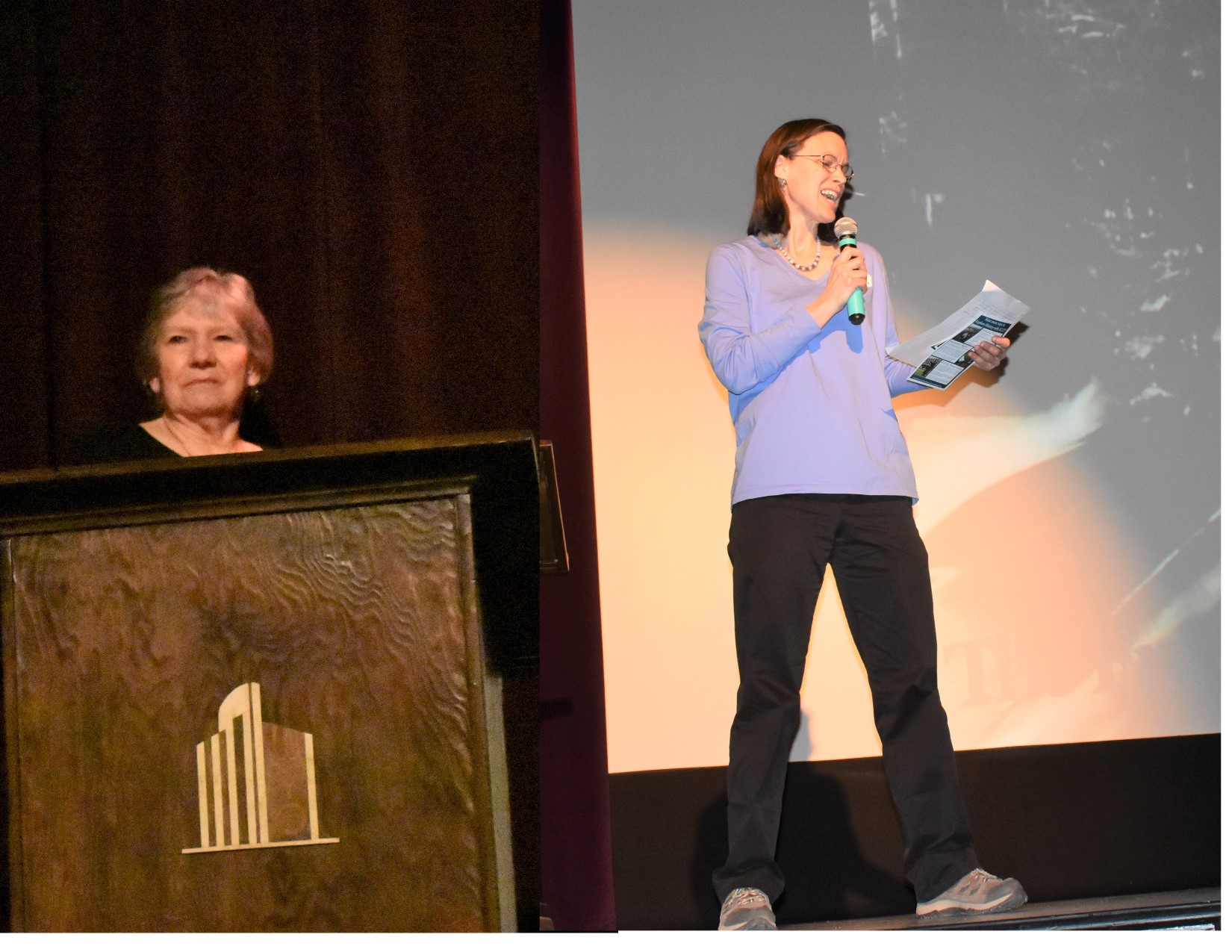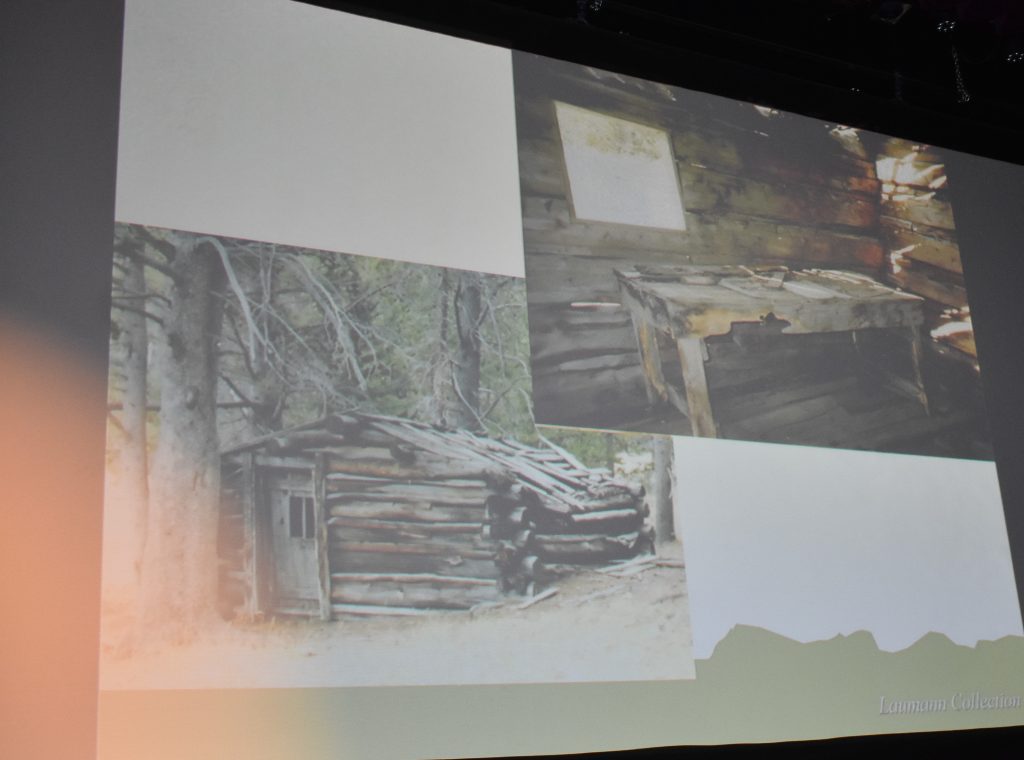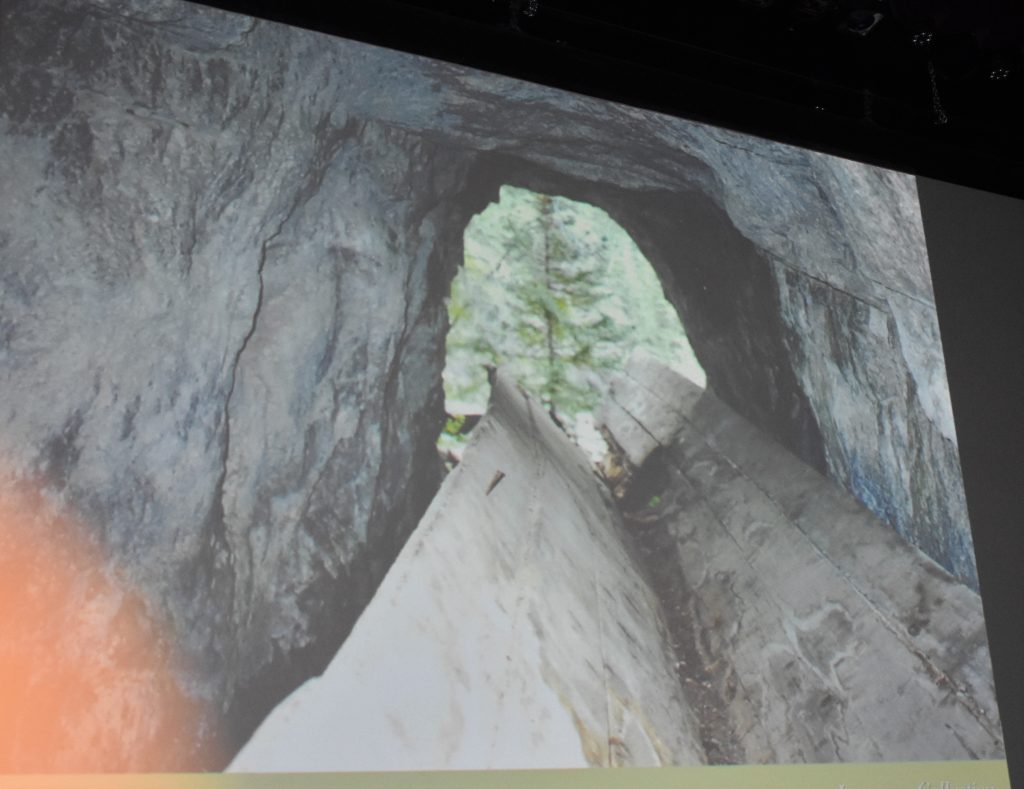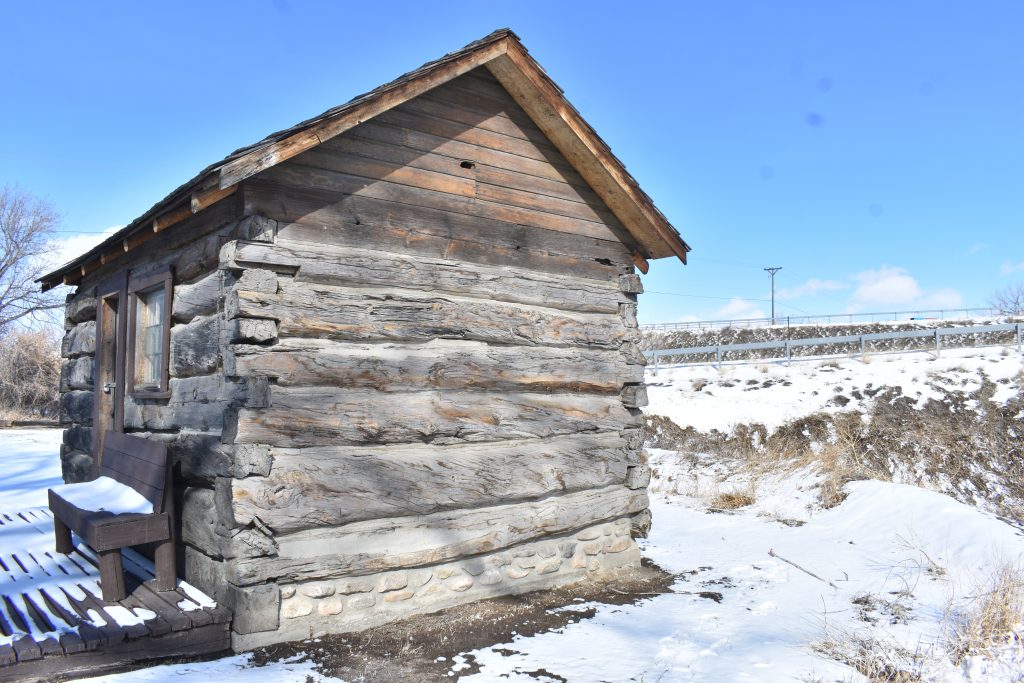News
Tie Flume Topic of History Talk
Published
2 years agoon
By
cvannoy
Helen Laumann and Carrie Edinger
Helen Laumann has spent many years and hiked many miles researching and documenting the Tie Flume in the Bighorn Mountains. She presented a program on the Tie Flume at the Sheridan County Land Trust/ Hub Explore History Program on Tuesday, March 8 at the WYO. Laumann presented a slide show with old and new photos to illustrate her presentation.
Carrie Edinger, SCLT, introduced Laumann, saying that Laumann became interested in the flume when she and her family were hiking in the mountains and saw the remains of the flume.
Laumann opened her talk with a time-line of the flume, she said that just after the Custer Battle, in 1876, the area opened up for settlement. In 1882, John Loucks stood on court house hill and decided to make a town. In 1888 Sheridan County separated from Johnson County and in 1890 Wyoming became the 44th state. In 1890 there were eight post offices in the area, including Sheridan, Beckton, Big Horn, Banner, and Dayton and there were a lot of homesteaders as well.
The coming of the railroad was very important to the Sheridan area. In 1890 Edward Gillette surveyed a route for the Burlington-Missouri River Railroad from Omaha, Neb. It went across South Dakota, into Wyoming and north to Huntley, Montana to join with the Northern Pacific to as a way to connect the middle of the United States with the West Coast. But to build the railroad required ties to hold the rails.
The two men spent a couple days on horseback in the Bighorn Mountains. They decided on an area near Sheep Creek, it had ample trees for the ties it also had the Tongue River nearby, which was a good water route to float the ties off the mountain. Starbird formed a partnership Thomas Hall, the postmaster in Omaha. Hall was the financial end of the partnership. In 1892 the company acquired a contract to cut 1,600,000 ties for the new railroad.
The first tie was sent down the newly built flume on Sept 20, 1893, and at first the ties were sent down in a flat bottomed flume, but the ties would sometimes hang up on the flat bottom creating a log jam. Later, a V-shaped flume was constructed. The first passenger train arrived in Sheridan in 1892, but the track was halted due to having to obtain permission from the Indian Affairs Department in Washington to run the tracks across the Crow Indian Reservation in Montana.
As there were no more ties to be made for the railroad until permission was grated to proceed, in 1893, Starbird and Hall sold out to McShane and Company. The companies timber operation paid the employees to continue making ties until the railroad started up again. They brought crews with them, including an engineer, a doctor, an accountant, a tie boss and an experienced crew. McShane and company redesigned the flume, making it in a V-shape so the ties would not hang up on the bottom. They also built a boardwalk along the flume and a telephone line along the flume as well. They extended the flume to the bottom of the canyon. Before, the ties were floated down the Sheep Creek flume and dumped into Tongue River, but the ties would hang up on the rocks and create a log jam.

In 1894 the railroad got permission to cross the reservation, and McShane and Company went back into to building the railroad grade and did the dirt work from Ranchester to Huntley in six months.
In 1894, the timber around Sheep Creek had been used up and the company began looking for a new area. They decided on the area around the head of the box canyon on Tongue River. Some people said it was impossible, but Malcolm Swan, engineer, said it could be done. He looked around and surveyed the area and said it was possible to built the flume there. In the summer of 1894 the camp was moved from Sheep Creek and started a settlement called Rockwood. They had to construct many sections of the flume along the canyon walls. In 1894, three men were killed when they dynamited the rock away to build that section of the flume. That area became known as Deadman’s Turn. This was 96 feet above the canyon floor. Trestles were built to cross canyons and around rock ledges. Many were 60 to 70 feet above the canyon.

When they built the new flume they established the town of Rockwood. In 1895, there was a post office a store, a blacksmith shop, a cookhouse, bunkhouses and a school. Several families built cabins around the town.
They had a shipping pond and a big boiler that they moved to the town. They built flume shacks along the flume for the flume tenders. In some areas there was a bell attached to a rope, suspended into the flume. If the bell rang as the logs came through, all was well. If the tender didn’t hear the bell, he knew there was a log jam somewhere.
The company employed 150 men, Tie Hacks, the men who shaped the logs into ties, cooks, log walkers, flume tenders and other workers. A Tie Hack could earn $30 per month, and the cook, being the most important part of the crew, could expect to earn $50 per month. All supplies had to be freighted up the mountain, hay for the horses, and groceries; beef, eggs, milk, and other stables were purchased from local farmers.
In 1899, a fire swept through the canyon and burned much of the town, and a great deal of the timber. The residents had to evacuate. The company moved operations to the base of Black Mountains and named the new town Rockwood 2, so they wouldn’t have re-apply for a new post office. In 1900 the railroad was completed, so the company continued to cut and shape logs for building cabins, fence posts, telephone poles, lumber, and timbers used to shore up the underground coal mining tunnels around the area.

In 1905 when the government took over the forests, it changed the lumber business. The company moved the location again, and called it Woodrock, which was located near the present day Dead Swede Campground. The company employed 175 men and 5000 ties and 8500 mine props were cut.
In 1908 McShane was outbid for timber, and McShane sold out to Big Horn Timber company. He then became a partner in Diamond Lumber Company in Sheridan. In 1909 the Big Horn Timber Company installed new equipment, as well as a sawmill, and a blacksmith shop. They built nine auxiliary camps and many small cabins were constructed by workers throughout the area. Many of these cabins can still be seen today. It was a big operation, over 400 men were employed on the mountain and 103 in Ranchester.
Even though the railroad was finished, the company continued to obtain contacts for ties and mine props. They cut and shaped logs during the winter, and stacked them to wait until spring when they could float them down stream. Piles of these logs can still be seen today.
In 1913, a fire destroyed the sawmill in Ranchester.
Today, portions of the flume can still be seen on the Bighorn Mountain, a reminder of the brave men who helped to bring the railroads to Northeastern Wyoming.


ira roadifer
March 10, 2022 at 9:47 pm
Read the Book by. Bob Granum, TheTongue River Tie Flume, for more history or check at the Wyoming Room at the library. Helen put on a great program and had lot of old photos to show about the flume. Thank you Helen.